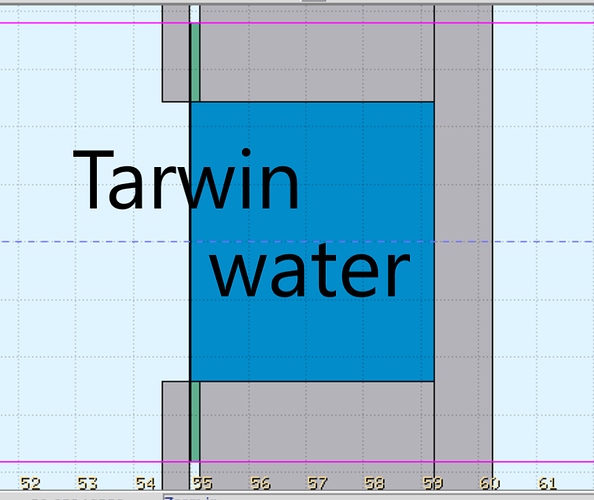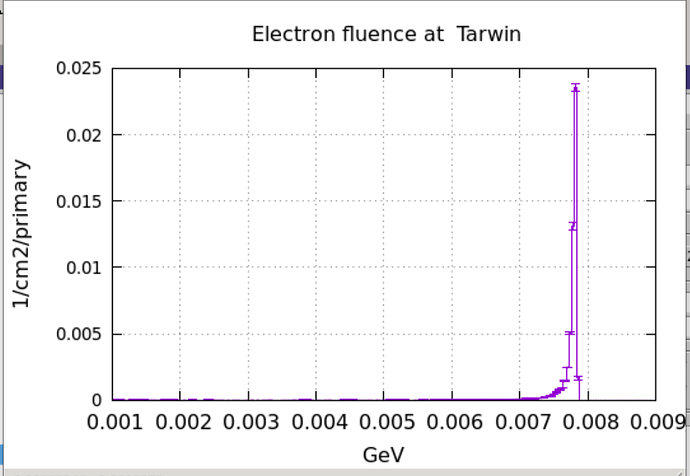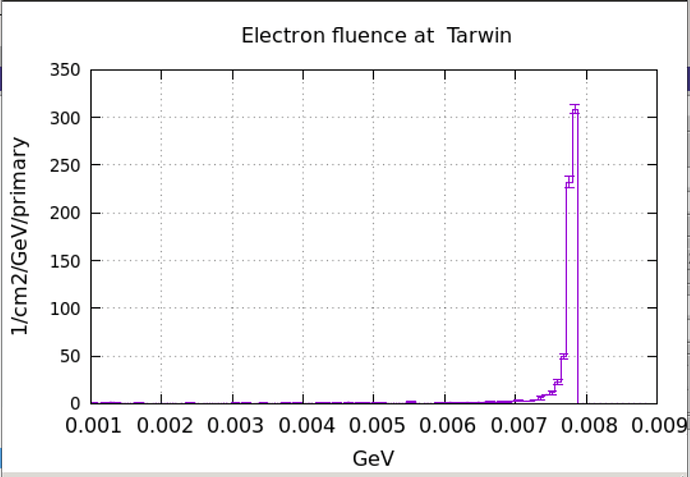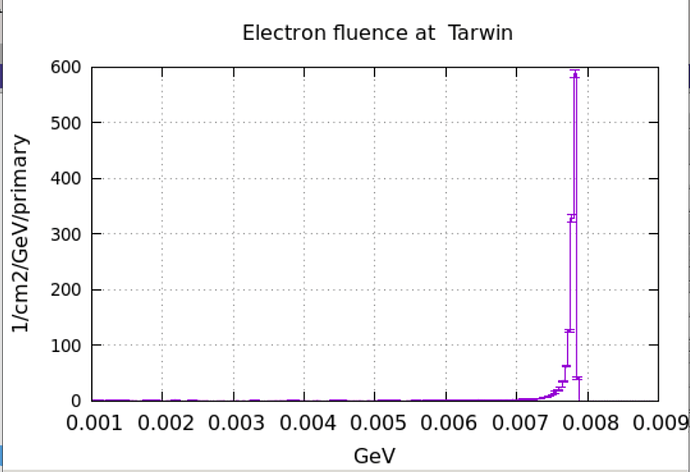Dear FLUKA experts,
I am using a 8MeV electron beam to irradiate a water container and trying to use USRBDX to score how many electrons pass through the container window (region name: TARWIN) to water (region name: H2O), as shown in the following figure.
The electrons come from the left of the Tarwindow and into the water region. Here I have the first question,
- should the tarwindow’s radius be exactly equal to that of the water?
I found the total (part/pr) number is different when I set the radius of the tarwindow exactly equal to that of the water region, it is slightly higher than that geometry in the above figure. All the other settings in USRBDX card are same.
The second question is about the fluence comparison.
2. Why is the result by USRBDX different from that by USRBIN?
The top figure is the result dX*Y (without angular distribution, detector ‘h20spec2’ in unit 41 bin in my flair file), because I care more about the electron numbers during different beam energy range, that unit is 1/cm2/pr. we see the peak value is close to 0.025. The bottom figure is the 1-D electron fluence by USRBIN (detector ‘elect’ in unit 24 bin), we see that the fluence along z direction at the target window is around 0.0025, which is one magnitude order lower than that in the USRBDX.
I know that the scoring by USRBIN is a track length (cm), then divide it by the bin’s volume (cm3) to get the fluence (1/cm2/pr), is this same in the USRBDX?
The third question is about the bins set for energy.
3. Is that normal that the dN/dE changes when the bins go more or less?
The top figure is by 100 intervals, the bottom figure is by 200 intervals.
I ask this question because I don’t quite understand the explanation in the topic " The difference between Y and DXY", it said that dXY is not good to plot, it is arbitrary? while in my files, I plot dXY to get the fluence, which is very close to each other with 100 or 200 intervals, do you have any idea? Thanks.
I attached my input and flair files here tiwindow.inp (27.0 KB) tiwindow.flair (26.9 KB) .
Thank you very much for your time and help.
Best,
Xi




